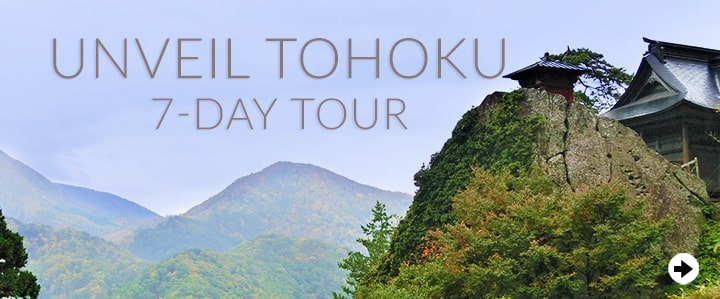Yamagata, Japan Jan. 27 Mon 12:38AM
Ginzan Onsen
The Ginzan Onsen has been a popular vacation spot since the Edo era, and, although heavily damaged by a flood about a hundred years ago in the Taisho era, it was soon rebuilt. For this reason, it retains the nostalgic retro feel of this more recent past as well as the deep roots of its ancient heritage.
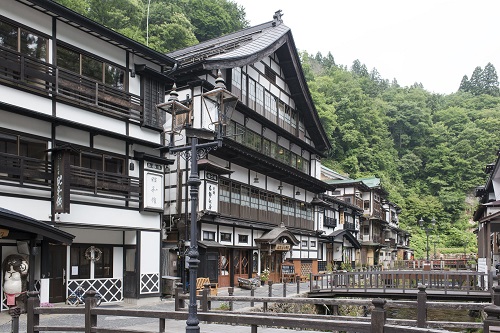
A wonderland for fans of both traditional Japanese architecture as well as hot springs, Studio Ghibli fans may also feel like they’ve stepped into the world of Spirited Away, as it’s said Hayao Miyazaki was influenced by the area when creating the bathhouse that appears in the film.
The area is lined with luxurious ryokan with delicious local delicacies and wonderful onsen hot springs, making it a wonderful choice for relaxation in Japan’s northern regions
History
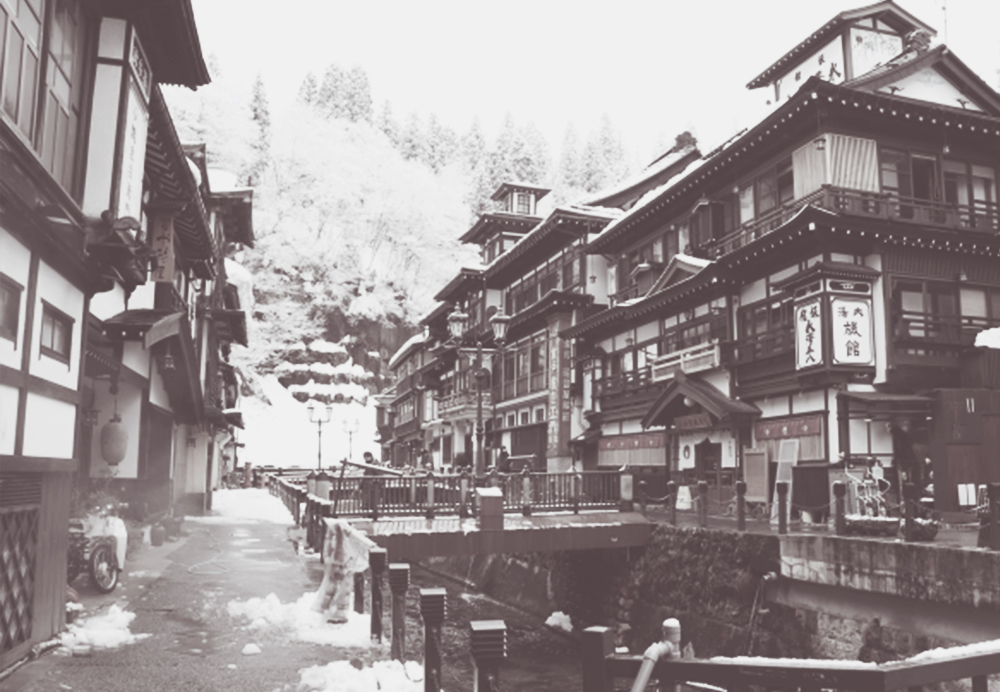
Ginzan Onsen was opened in the Edo period. It is said that it began when workers at the Nobusawa Silver Mine, which once stood here, discovered a hot spring that gushed out within the silver mine.
Later, the silver mine was closed, but the Ginzan Onsen became popular as a therapeutic hot spring resort. However, around the Taisho era (1912-1926), Ginzan Onsen suffered from flood damage. Many of the hot spring hotels were washed away, and the amount of hot spring water gushing out was drastically reduced, leading to the closure of the hot springs.
However, thanks to the efforts of the local people, a large-scale boring survey was conducted at the beginning of the Showa period, and a large amount of high-temperature thermal water has discovered. As a result, Ginzan Onsen was restored as a popular hot spring resort, and the inns were rebuilt with wooden high-rise buildings of three to four stories, making the romantic townscape.
Beautiful streetscape
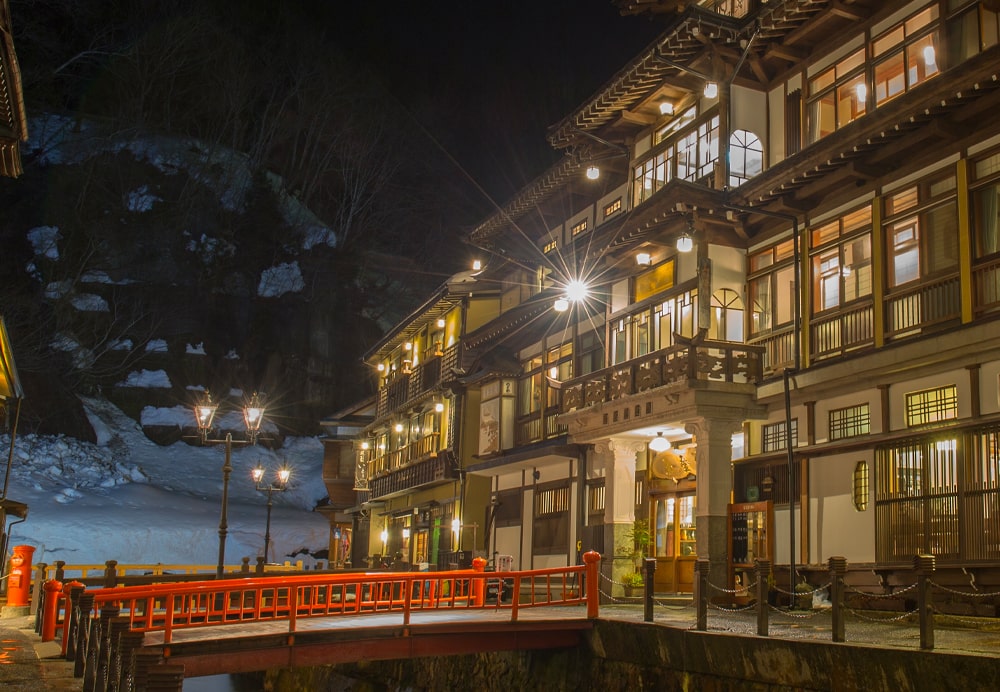
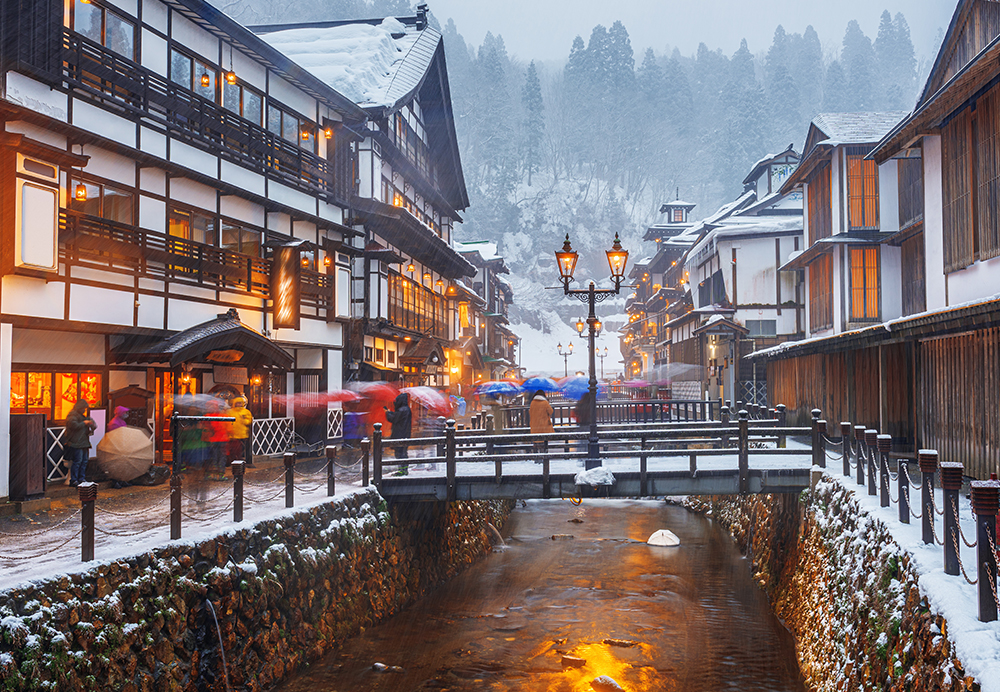
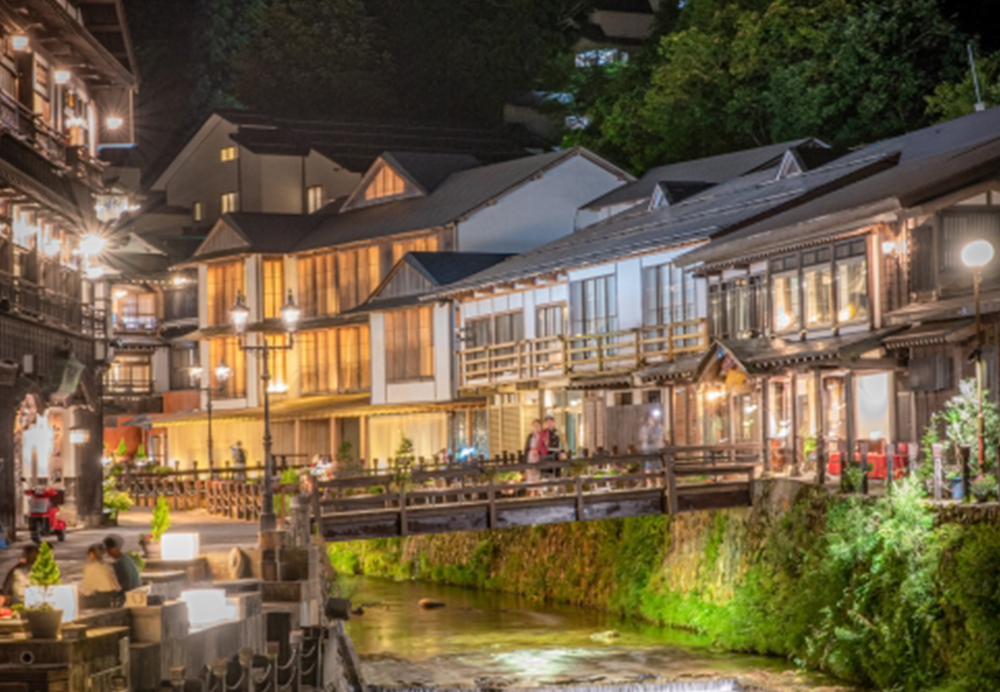
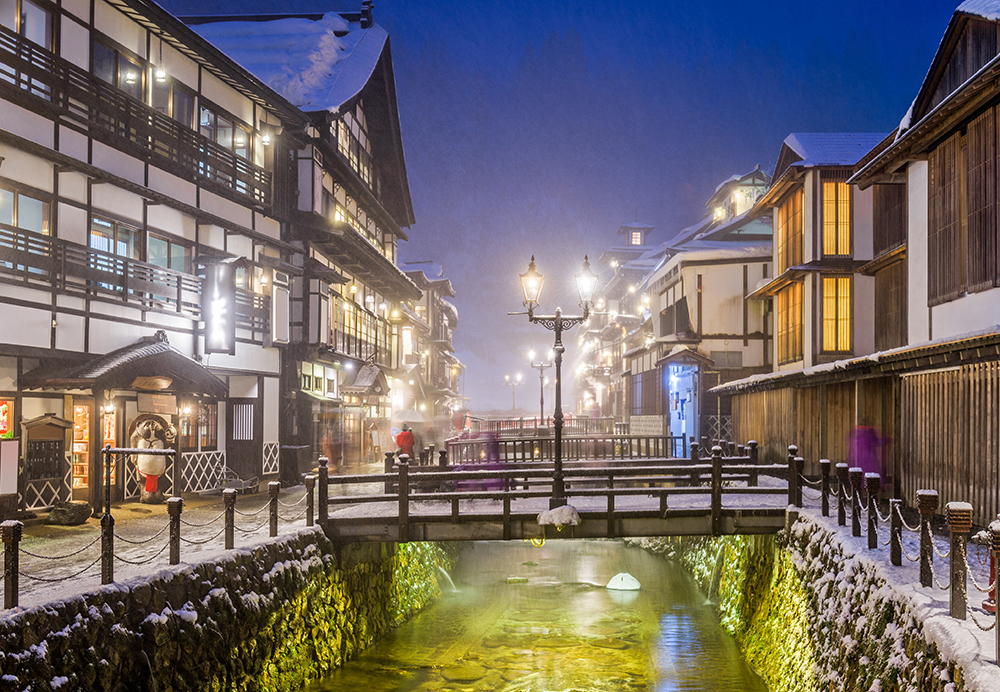 One of the reasons for the popularity of Ginzan Onsen is the beauty of the townscape.
One of the reasons for the popularity of Ginzan Onsen is the beauty of the townscape.
Ginzan Onsen is famous for the view of the rows of wooden ryokan (traditional Japanese inns), which were reconstructed in the early Showa period (early 20th century). In particular, the row of four-story wooden balcony ryokans on either side of the river is very romantic.
The wooden balconies, latticed windows, plaster and trowel paintings on the exterior walls, and gas lamps on the sidewalks create an atmosphere reminiscent of the time back in the early Showa period
Especially in winter, the contrast between the warm light of the gas lamps and the falling snow is a sight to behold. The view is representative of Ginzan Onsen, which has been selected as one of the best hot spring resorts in the east of Japan.
Secluded Hot Spring
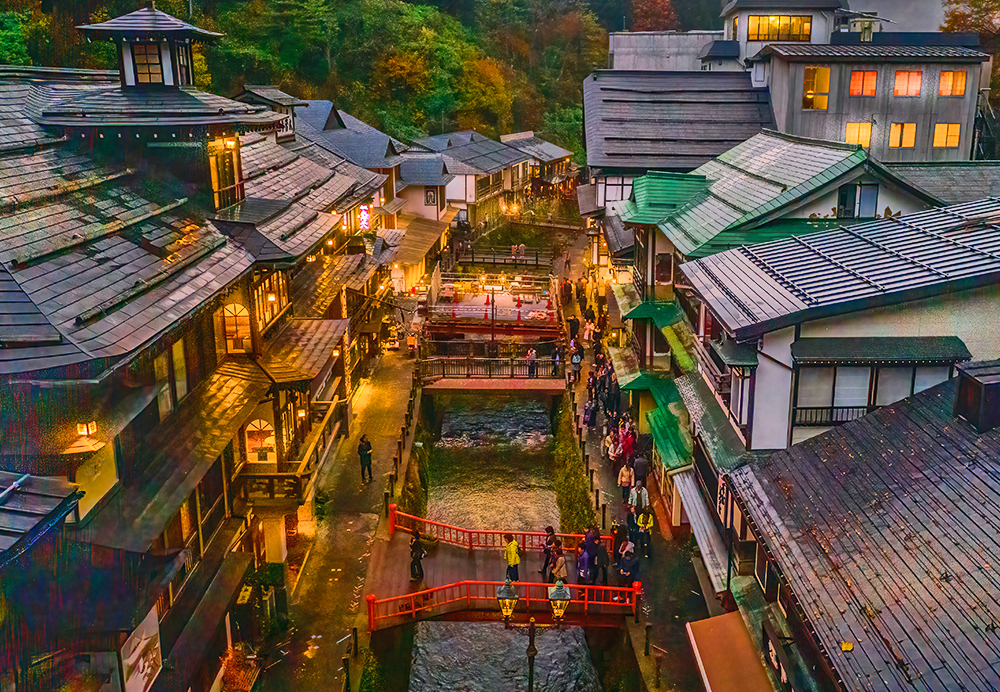
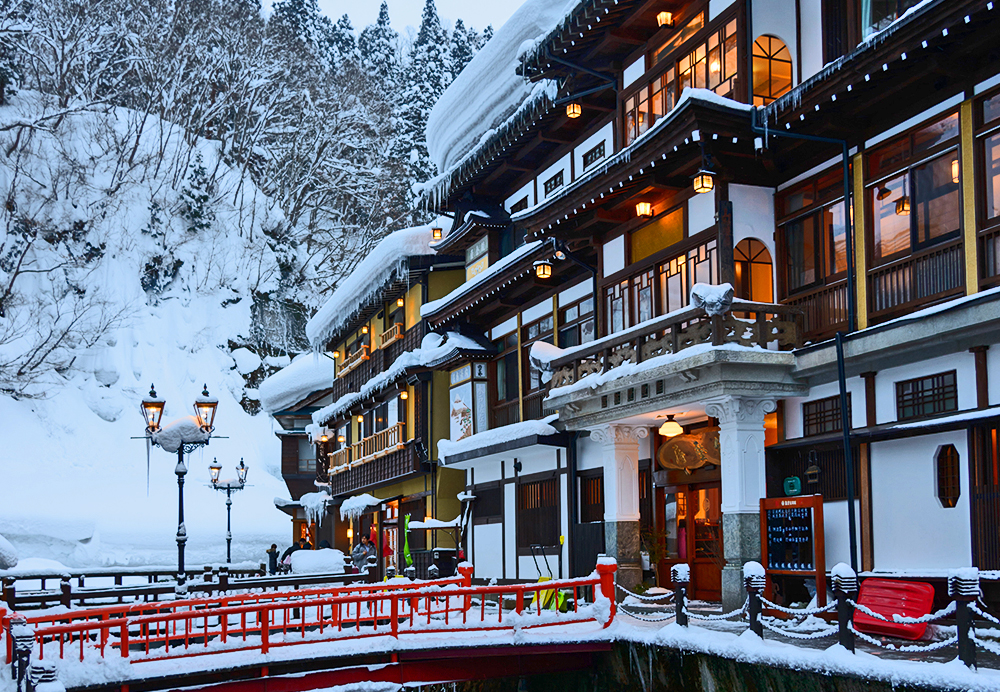 The hidden hot spring atmosphere of Ginzan Onsen is still alive and well. Especially in winter when the surrounding mountains are covered with snow, it adds to the atmosphere of a secluded hot spring resort. There are no convenience stores in the hot spring resort, and the time is completely different from that of urban life. You may experience some inconvenience, but this inconvenience is also a great part of traveling.
The hidden hot spring atmosphere of Ginzan Onsen is still alive and well. Especially in winter when the surrounding mountains are covered with snow, it adds to the atmosphere of a secluded hot spring resort. There are no convenience stores in the hot spring resort, and the time is completely different from that of urban life. You may experience some inconvenience, but this inconvenience is also a great part of traveling.
Haikara san's Curry Bread
 Ginzan Onsen's famous "Haikara san's Curry Bread” uses Yamagata Prefecture's "Nebarigoshi" wheat. The curry inside the hot bun has a bit of a spicy kick to it, which attracts many fans.
Ginzan Onsen's famous "Haikara san's Curry Bread” uses Yamagata Prefecture's "Nebarigoshi" wheat. The curry inside the hot bun has a bit of a spicy kick to it, which attracts many fans.
At Haikara san, you can also enjoy seasonal dishes such as imoni (stewed sweet potato), a local dish of Yamagata, in a restaurant that evokes the atmosphere of Taisho Romanticism.

